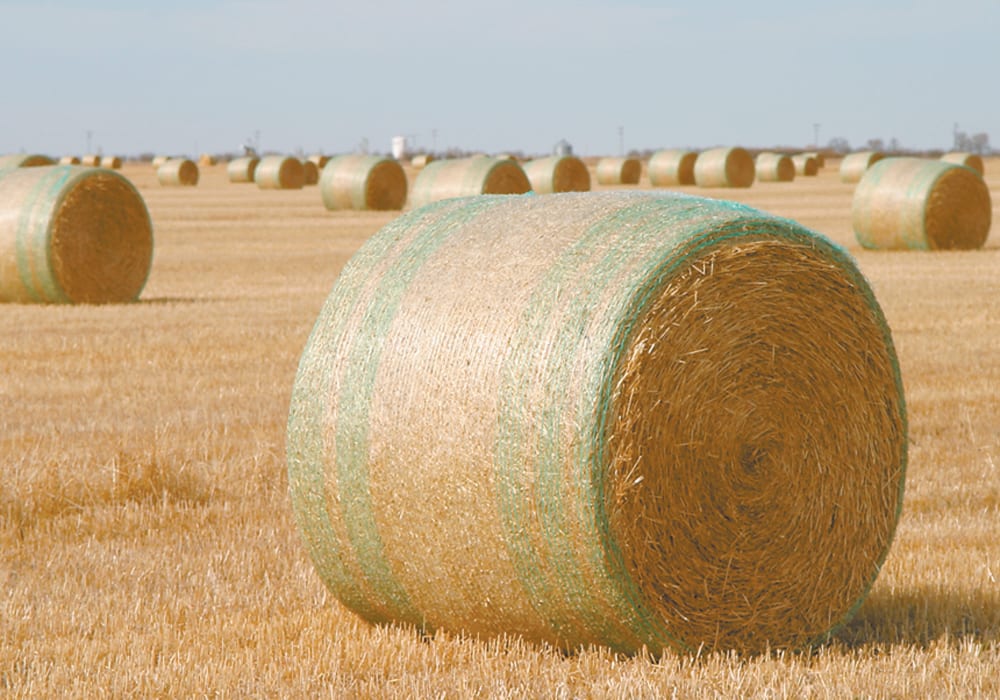Some producers say they will make it through winter with the supplies that they have, while others aren’t so lucky
As producers gathered to market and show their cattle at Farmfair International in Edmonton earlier this month, one issue on top of many people’s minds was the lack of feed.
Shortages are affecting everyone differently. Some say they will manage to get through the winter while others are in a tough spot. Do they sell or bite the bullet?
But even if they’re feeling relatively OK, they know of a neighbour, friend or family member who isn’t.
“It’s definitely an understatement to say it’s been tough,” said Christine Boake of Alta Cedar Shorthorns, which raises mostly purebred cattle near Alix, Alta.
Read Also

Feds propose overhaul of chronic wasting disease control program
Chronic Wasting disease control program getting updated by Canadian Food Inspection Agency with feedback encouraged from producers.
She said the family is going into winter without enough feed. They couldn’t get enough hay from their land and are now in the middle of deciding whether they should sell some cows.
“It’s a tough decision for sure,” she said.
“For us, it’s not as much of an impact because we’re a small-scale operation, but I know for some family we know, who have 1,000 head, it’s truly devastating for them.”
Other purebred breeders say they are paying higher than usual prices for hay and pellets.
“The prices out there are ridiculous, but it’s understandable,” said Samantha Roscoe of Family Ties Angus near Marwayne, Alta.
“It’s going to be a hard one to get through.”
Brad Yoder of Cinder Angus near Barrhead, Alta., said he expects commercial cattle producers will take the biggest hit. Purebred producers are in a completely different market, he added.
“We’re still going to sell our bulls and our calves,” he said.
“When next year rolls around in the spring, guys are still going to have to buy bulls. They will still be going to the sales.”
Due to poor weather in September and early October, some crops meant for grain were downgraded to feed. The extra feedgrain supply could be helpful for producers who need some for supplementation, though it won’t be the sole source.
Breeders and commercial producers feed mostly forages. Too much grain could cause health problems and possibly reduce a bull’s energy to breed. For cows, too much can cause them to gain weight and become more costly to raise.
Therefore, the feedgrain that’s out there will primarily go to the feedlots.
However, there are a number of feed alternatives that producers can turn to.
During Farmfair, a session was held to provide producers with options in case they are short on feed.
Specialists say feeding straw with supplemental grain is one option. Straw should be fed only to pregnant cows that aren’t lactating. It’s not recommended for feeding to lactating cows or growing calves because of its lower energy and protein levels.
Pellets and kochia also works but specialists have said kochia should never take up more than 25 percent of the diet. High amounts can cause low calcium levels and potentially lead to death.
It’s always recommended that producers get their feed tested to know exactly what they are dealing with. Tests can determine quality, protein and energy contents.
Yoder said most producers will always find a way around feed shortages.
“If there isn’t enough hay, you can feed straw and barley, other rations or liquid proteins,” he said.
“There are so many ways to do it.”
For people who are moving their animals to a custom finisher because of shortages, Alberta Agriculture recommends they be moved at a rate that equals the feed shortage rate. For example, if they are short 25 percent, they should move 25 percent of the herd.
Costs of finishing should be taken into account, as well as the cost of hauling. Producers can also sell a portion of the herd and buy back heifers, or sell a portion of the herd and use homegrown heifers as replacements.
The federal government has also implemented the livestock tax deferral provision this year for some regions. The program lets producers defer some sale proceeds to the following year. It could allow ranchers to use deferred income to buy back cattle the next year.
Producers can see if their area is covered by the program by visiting bit.ly/livestockdeferral.
















